Customer-First Quest
We’re living in the era of the customer, there’s no doubt about it. Digital transformation, intense market competition, the ubiquity of (ever-changing) technologies, the proliferation of products and services, and, of course, the internet and mobile technology are all dictating the way businesses are doing business.
It’s a simple truth: If businesses want to survive and thrive in this day and age and beyond, they need to put the customer first. They need to develop a customer-centric culture across all departments and teams. Easier said than done, right?
Right.
Think of your favorite airline, for example. Taking cost out of the equation, there’s a reason why you choose to fly with them or prefer flying with them over other airlines. And why? It’s probably because they offer a great service.
When possible, I always try to fly with Emirates because of the customer service and experience they’ve provided over the years. For example: The booking process has always been effortless, they’ve always replied to my requests (without delay), they send email reminders / SMS reminders, and make the check-in process simple. I was given priority boarding once because I was traveling alone. On another occasion, a cabin crew member organized a special care package for me onboard my one flight because I’m a pretty nervous flyer. So they went above and beyond for me. And even when their flight tickets may be a bit pricier than other airlines depending on the route I take, I still choose to fly with them because I’m willing to pay for exceptional and quality service (disclaimer: I was not paid by Emirates for this ;)).
And that’s what businesses need to keep in mind: The majority of customers are willing to pay more for a product or service if it comes with an awesome CX. It’s not always about the pricing but rather about the quality of the service and product you deliver and provide. Research by Gartner indicates that more than 50% of customers value experience over price when choosing to purchase a product. So, being a customer-first company needs to be at the very heart of your business strategy.
An article on Resonate’s blog makes a good point: How did we manage to get to a point where customer centricity has become a huge buzzword, meaning that somewhere along the line, companies started realizing that paying attention to the customer and putting them first actually led to a serious competitive advantage?!
Well, with the rise of SaaS and Martech companies alike, it really is all about the customer – it simply has to be. These kinds of companies aren’t monopolies (even though that’s no excuse, of course, to provide a poor CX), and we aren’t living in the 1990s when sales- and profit-centric cultures in the workplace dominated.
So, when it comes to customer centricity, what do we actually mean by the term? And what does it take to be a customer-first (or customer-centric) business?

Table of Contents
Defining What It Means to Be a Customer-First Business
This is one of the first challenges many businesses face: They don’t know how to define what customer centricity means to their company.
Customer centricity basically comes down to putting your customer first AND designing your products and services to meet your customers’ specific wants and needs. It’s about providing that exceptional customer experience right from the very first touchpoint with your customer. It’s about asking the questions who are your customers and what do they need and then working from there to help them be successful. Basically, if you want to thrive in today’s environment, you need to become obsessed (in a good way, of course!) with your customers.
But becoming a customer-centric business is a process and the journey is filled with many challenges. According to brand and leadership expert Denise Lee Yohn, businesses have been trying to adopt customer centricity for over two decades now. But research by the CMO Council indicates that companies are still struggling to make their company customer-centric, even twenty years later. But why??
In this article, we take a look at some of the challenges your business needs to overcome to become customer-centric. But, more importantly, we’ll take a look at how customer success teams, in particular, can contribute to developing a culture of customer centricity. And because we’re all about solutions at Userlane, we’re going to give you some guidance on how to overcome these challenges.
Customer-First Challenge #1: Silo Structures and Lack of a Great Employee Experience
This is a big one. It’s easy to fall into the trap of thinking that customer-centricity should be the main responsibility of client-facing departments. The rise of the SaaS company has led to the creation and intensification of the need to have customer success teams. So it’s easy to see why other departments in the company that aren’t client-facing would want to leave the customers’ wants, needs, and challenges in the capable hands of customer service, support, and success teams. But this, contrary to belief, shouldn’t be the case. If you truly want your business to be customer-centric, then ALL employees and ALL departments need to focus on the customer. Customer centricity is about placing the customer at the very core of your business.
Andi Lobdell, Senior Vice President of Customer Experience at Carhartt Inc., gives some excellent advice on how to build an exceptional customer experience. She advises companies to ‘embrace the reality that your customer experience will never exceed your employee experience. Creating a customer-first culture starts with creating an employee-first culture.’
Creating an exceptional employee experience is the foundation of building an exceptional customer experience because the employees are your company and it’s the employees your customers are communicating with. It’s logical: Unhappy employees simply won’t be motivated to deliver the experience your customers expect and deserve.
Being a customer-first business also means that your company needs to be service-oriented as opposed to task-driven. For employees who aren’t client-facing, it’s easy for them to forget about the customer experience. So, how can you get your employees to embrace a customer-first culture?
Well, firstly, it comes down to leadership and upper management. Managers, executives, C-Level position leaders etc. need to define and understand what a customer-first strategy means for their product/ brand, and once this is in place, this needs to be communicated to all employees. When leaders fail to take ownership of the business, this can create silos and misalignment and a misunderstanding of what customer-centric strategies are in place.
Regular meetings and open feedback loops on what managers are doing to enhance both the employee and customer experience are a must. It’s very easy to slip into the ‘all talk but no action’ routine, and that’s why managers and leaders alike need to actively demonstrate their efforts and show proof that their efforts to implement a customer-first culture are leading to visible results.
Andi Lobell recommends creating guides for employees that will encourage conversations about how to become a customer-first organization, as well as use meetings to give examples of what kinds of behaviors are supporting this goal. Employee development programs that increase knowledge and understanding of the customer are great for uniting EX and CX efforts: Employees learn new skills in the process and they gain insight into the customer and how they can help them achieve their goals. Andi also suggests getting external, third party help from seasoned experts who can help your organization and support it on its journey to adopting a customer-centric culture.
In an article for the Harvard Business Review, Denise Lee Yohn discusses the importance of hiring – or creating the role – of a Chief Experience Officer (the CExO). The CExO would be responsible for integrating the CX and EX in order to achieve a ‘unique, sustainable competitive advantage’ over other companies. However, the trick with EX and CX is to find a good balance between the two: Sure, having the best EX will work wonders for customers, but only if employees do actually have the skills in place to serve customers. Similarly, too much emphasis on the CX and not enough on the EX can cause problems in terms of absenteeism and high employee turnover rates.
Chief Human Resources Officer at IBM, Diane Gherson, states that at her company, employee engagement accounts for two-thirds of their customer experience scores. This is why a CExO could prove highly valuable for your company. An excellent example of such a CExO initiative is Donna Morris who led Customer and Employee Experience at Adobe. Here’s what she did to integrate the EX and CX successfully:
- She set up listening stations where employees could hear directly from customers to learn about their challenges and successes.
- She spearheaded a compensation program that tied each employee to the customer. The program functioned as a cash incentive plan that was based on company revenues and customer success ratings.
Getting employees on board with a customer-first strategy, mindset, and culture requires great effort – it’s a huge change management process. And don’t forget the emotional aspect of this change: Your employees are human, change isn’t easy, and with a change in strategy comes a change in communication. There’ll be more feedback. Employees will have to make changes in how they do things. You need to make sure there are people in place who are strictly dedicated to customer centricity so that they can influence and guide other employees.
Let your customer success team spearhead some initiatives to get all employees on board with your customers’ needs and wants. Sure, top-tier executives and leaders must have their say in strategy and processes, but who better to really step in and give an in-depth insight into the customer than the customer success team?
Customer-First Challenge #2: Lack of Customer Personas and Inadequate Measuring of the CX
This, once again, comes down to silo structures and a lack of communication between departments. Sophia Bernazzani, writing for HubSpot, talks about using buyer/ customer personas effectively and consistently. How? By having product and customer success teams building these personas based on real conversations with customers and not making them complicated. They need to be simple enough so that everyone in the organization can easily remember them.
It’s also vital for organizations to measure the success of their customers and the quality of the experience they’re providing. Here, Sophia recommends two things: Customer success teams should rather use metrics that can be used to prompt proactive behavior and that irrespective of what metrics companies use to measure customer success, they must always obsess over customer feedback and take it seriously.
Customer-First Challenge #3: Skills, Skills, Skills!
It’s one thing to have a customer success team in place, but it’s another thing entirely to have a customer success team in place that is made up of customer success experts who have the necessary and much-needed skills to deliver and perform.
Ed Choi, a customer success expert who has led customer success teams at HP, Verizon, and Resonate, talks about hiring the right talent to get the job done. His advice is to hire customer success managers and professionals that have the right skills and experience to lead projects not only for customers but across other business departments too – and these skills need to be aligned with the goals of each customer.
What companies need to keep in mind, however, is that there is no generic blueprint for a CSM – there is no realistic one-size-fits all approach to hiring and building a customer success team. Andrew Marks of SuccessHacker says those in charge of hiring CSMs need to consider important factors, such as: What is your company selling or what subscription-based service does your company provide? How is your company positioned in the marketplace and who are you selling to? How mature is your company? And how have you defined the mission of your customer success team?
However, Andrew does believe that there are some core skills and traits customer success managers need to have, including:
- The ability to think quickly, proactively, and to remain calm in the face of pressure.
- Being patient and not simply giving the answers the customer wants to hear. It’s natural to want to please the customer, but CSMs also need to be transparent and honest. CSMs shouldn’t rush to give answers, and they need to be logical and good listeners. It’s how a CSM handles the negative situations that will really set them apart from others.
- Having the ability to make well-thought-out decisions.
- Being persuasive, in a good way. This is not only important for customers, but for dealing with internal teams too.
- Grit and passion. We actually talk a lot about grit here at Userlane. It’s about wanting to put in that extra effort. If customers have only signed up for short-term contracts, it means the barrier to entry was low – which means that the barrier to exit will be low as well. CS teams need to be churn fighters, so by putting in that extra effort, being passionate about the company’s service/ product and about the customers, as well as being tenacious, can all go a long way in reducing churn and turning customers into those all-important advocates.
- Having excellent project and time management skills. Customers don’t have time to wait (or waste), and neither does the internal team. Organization is crucial.
- Having empathy. I mention this a few times in this post: Both employees and customers are human, and at the end of it all, they’re driven by emotion. It’s crucial for CSMs to be empathetic to team members and customers: Actively listen to what they’re saying and be genuine in your approach to dealing with problems.
Regarding empathy, the Content Marketing Institute actually asked this question on Twitter: What brands have you seen excel at showing empathy towards consumers? Here are some of the tweets in response to this question:
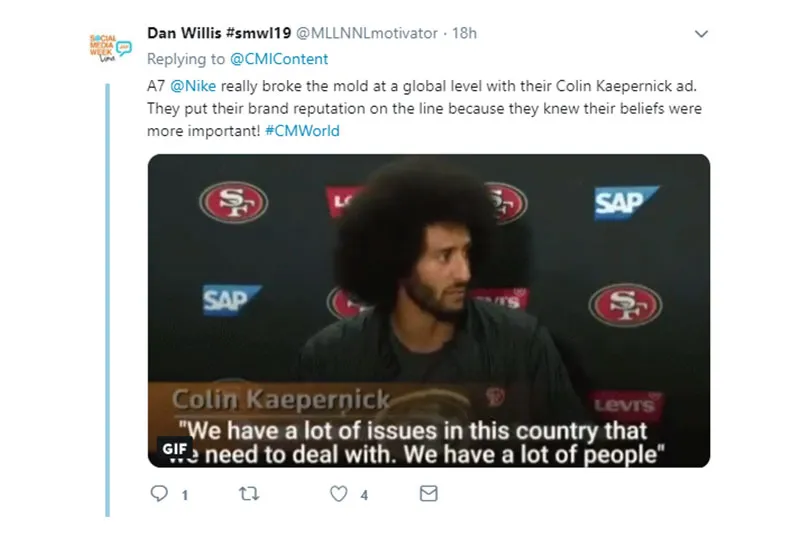
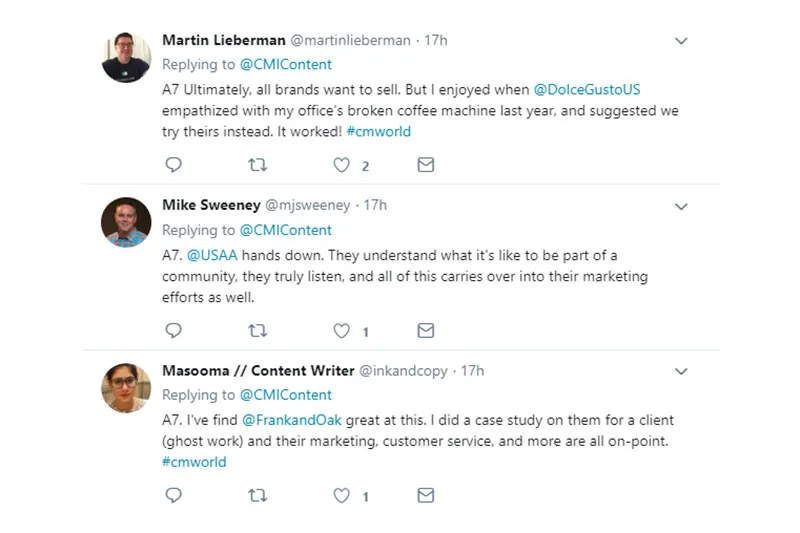
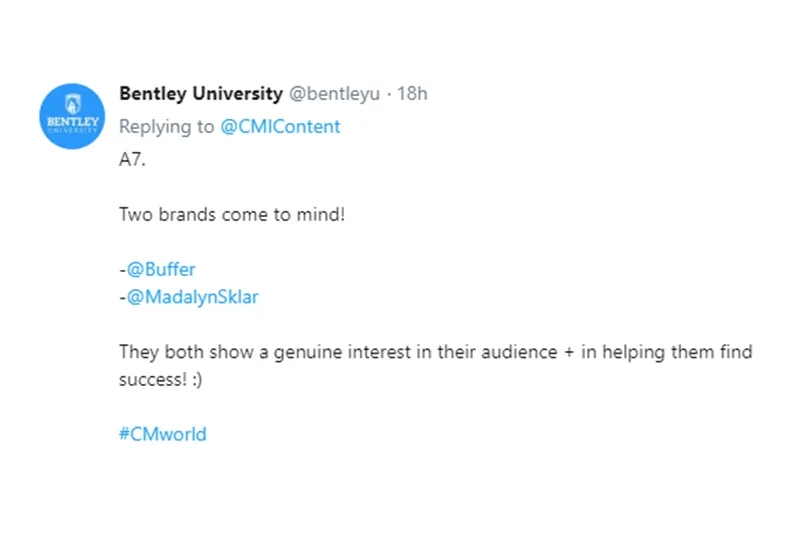
Going back to the traits of successful CSMs, there are, of course, many more core traits a CSM needs to have, but the main message here is that companies cannot afford to hire CSMs that are an inadequate fit for the team/ company.
So just as much as sales teams need to take their time in determining if a customer is a good product fit, those involved in the process of hiring a CSM need to take their time in evaluating the potential hire and determining if they will be a good fit for the team and for the company and customer.
Customer-First Challenge #4: Your Organization Is Profit-Driven/ Sales-Driven
Okay, this is a tricky one. All companies are, of course, profit-driven ;). Just because a company is sales-driven or profit-driven, it doesn’t necessarily mean that the company isn’t customer-driven.
The trick, however, is not to let the closing of a sale or that desire to maximize profits become the overarching/ all-consuming attitude that infiltrates the company culture. Think about those big monopoly companies that have little to no competition: They can get away with delivering poor customer experiences because they know their customers have nowhere else to go.
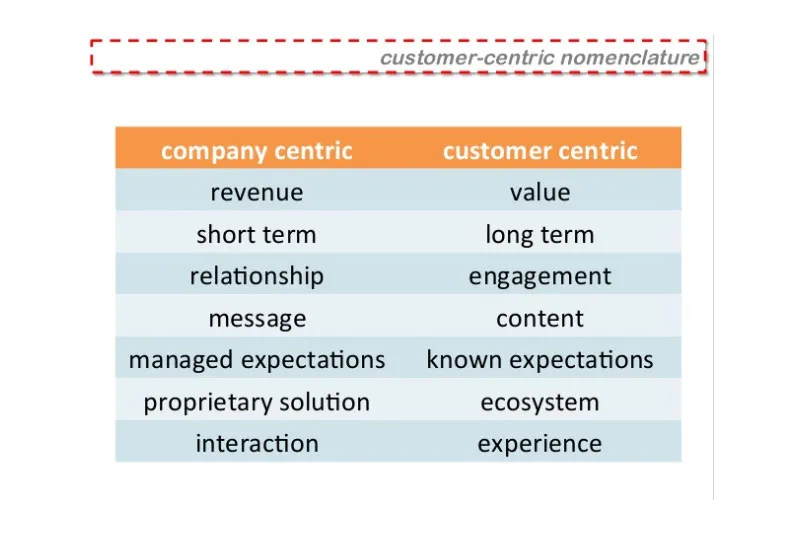
But as a SaaS company, there’s no way you can afford to drop the proverbial ball when it comes to dealing with your customers. I actually find it quite amusing how the media has managed to stereotype salespeople to the point where a lot of people tend to view them as sharks or annoyances or those car-salesmen who use shady tactics to get people to buy cars that are barely drivable.
But this perception of salespeople is changing, especially in the SaaS world. In many companies, employees in sales are called business development managers, and I personally like this term because it creates a positive image of these employees and their goal: To develop the business by contributing to an awesome CX.
So the challenge is not that sales-centric companies need to be customer-centric companies because in many ways, sales-centric companies ARE customer-centric with the right people, strategies, and processes in place. What do I mean by this? It comes down to silos again. There shouldn’t be any silos, and customer success teams and sales teams need to be unified in terms of adopting the same mindset, culture, and attitude.
The greatest challenge in adopting a customer-centric approach is the cultural change that comes with it. Initially, businesses depend on sales – without sales, there’s no customer, so it’s obvious why some companies may focus more on sales departments and less on other customer-facing departments.
However, customers don’t want to be treated like a sales statistic, they really don’t. If you bombard your potential or existing customers with long-winded sales pitches and become more of an annoyance than anything else, then customers are likely going to talk of this experience to other people either verbally or on social media channels – and now you’ll have to spend time and resources doing some damage control.
What this means, then, is for companies to have a customer-first sales team. Sales teams need to focus on the customer’s needs FIRST – what are their pain points and how can your product/ service resolve these pain points? Yes, as a salesperson, you want to close the deal and get the MMR, but this needs to be secondary because if you focus on your customer completely, you’ll be guaranteed the win after. Get rid of the ‘sell now, beg for forgiveness later’ attitude if it still exists in your company.
Salespeople are also known to have the proverbial gift of the gab, which is great! I mean who doesn’t want to be able to sell ice to Norway in the depths of winter. But adopting a customer-first attitude also means listening attentively to your prospective customer: What do they truly need from your product or service? What are their frustrations? Listen to their feedback – even if your service doesn’t offer what your potential customer needs right now.
You need to be able to build trust with your potential customer right from the very beginning, and as a salesperson, you’re in a prime position to do so. If a customer trusts you from the get-go, they’ll trust the rest of your company and the product you offer. Meet their needs FIRST, meet them exactly where they are, and don’t pressure them into a purchase. Rushing into a deal and prioritizing quantity over quality only leads to trouble, such as customers who are poor product fit.
I came across an interesting article that talks about the concept of the ‘Platinum Rule.’ The author of this article, Carrie Witham, attended a presentation by Rob Bell (a professional speaker) who said that we should stop talking about the Golden Rule of ‘treat others as you would like to be treated’ but rather about the Platinum Rule, which is ‘treat others as they would like to be treated’. In a customer-centric context, this means that those in customer-facing roles, like salespeople, need to investigate the ins and outs of their customer’s behavior: Do they prefer reaching out via social media? Would they rather speak to you in person, face-to-face, or do they live far away and therefore require online engagement? You could be struggling to close a sale for the simple reason that you’re not engaging your customer the way they’d like to be.
And once again, don’t take emotion out of the equation. Denise Lee Yohn talks about customer empathy, which is the ability to ‘identify a customer’s emotional need, understand the reason behind it, and respond to it effectively and appropriately’. People don’t simply buy products for no reason, there is an emotional motivation behind those decisions. As a salesperson or a CSM, do your research, find out what drives your customer to buy your product, and use this information to optimize their CX. Get employees who aren’t client-facing to listen in on one of a sales calls or in a call with one of your long-term customers – this is an effortless way to get all employees thinking about the customer and what he/she wants from your product.
So, it’s not about sales-centric VERSUS customer-centric, but rather about both sales and customer success departments aligning with the same goals of both the customer and the company. Some excellent examples of companies that are sales-driven but are customer-centric include Salesforce, Gainsight, and Oracle. Salesforce is considered the model for creating a truly successful customer success team, so much so that they actually call it the ‘Customers for Life’ team. So while Salesforce is also a sales-driven or sales-centric company, they are also all about the customer and winning the customer for life. It comes down to a breaking down of silo structures, seamless handoffs between sales and customer success teams, and working together towards common business and individual customer goals.
Customer-First Challenge #5: Your Current Business Model is Product-Centric
Once again, this isn’t a case of product-centric versus customer-centric. Like sales-centric companies, product-centric companies are also focused on the customer – but only if the product is based on customer’s needs and wants in the sense that sales, product, and customer success teams actively listen to their customers by tuning in to what their pain points are, what they’re looking for, and what features they want.
This is how both product and customer success teams can develop that customer-centric mindset and culture. These departments need to consistently and effectively communicate with each other by always focusing on the customer’s needs and wants. Some ways to achieve this include:
- Product teams/ UX researchers can conduct extensive UX research, create user personas, and use product storytelling to engage teams across departments (engineering/ customer success/ marketing, etc.)
- Customer success and product teams can use feedback loops/ have regular meetings/ use communication channels like Slack to ask each other important questions related to feature requests/ customer requests/ customer reviews etc. Here at Userlane, we have Slack channels dedicated to ‘ask a success manager’, for example, where all teams in the company can get an insight into what’s happening in customer success, what kinds of questions customers are asking, what kinds of reviews customers are giving, etc. Open feedback loops are key for validating product-market fit, growth strategies, and prioritization of tasks and features on the product roadmap.
- For product teams, involving customers in the product roadmap by making the product roadmap public, for example, can be an excellent way of truly making your customers feel as though they are being heard and valued for their input. If you’re a product-centric company, involving your customers in your product roadmap is a huge step in making your organization truly customer-centric.
- Customer success teams can share CX and CS metrics with other teams, and they should do so regularly. Research by Forrester indicates that 72% of surveyed companies didn’t actually review CX metrics or share them regularly with all employees. Nate Brown, director of CX at UL EHSS, says that at his company, they have weekly ‘Customer First’ gatherings with leaders across the company. They do this to evaluate feedback they’ve received and to come up with strategies on how to improve the CX together. It’s all about collaboration.
However, the challenge with these processes and strategies is that it can become expensive. It’s not possible for a company to say hey, we’re now customer-centric, boom! It would be great, wouldn’t it? But like everything good in life, it takes time. Market research, NPS analysis, sentiment analysis, the centralization of information, structuring the company around digital transformation practices – it’s a lot. It’s expensive. It’s time-consuming.
BUT. The pay-off is massive. You can’t afford not to do it.
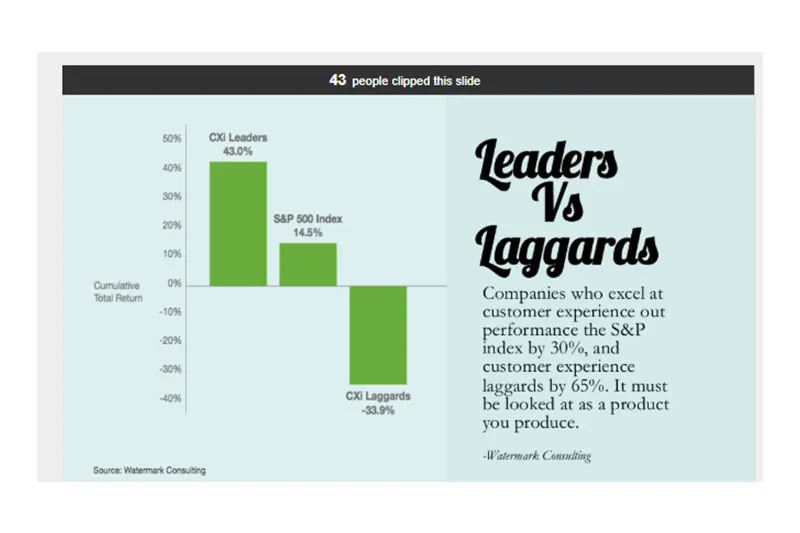
Customer-First Challenge #6: Lack of the Right Technology and Systems Preventing Scale
Data, data, data. It’s everywhere, but surprisingly, many companies don’t actually make effective use of big data to analyze their customers. And because there is so much data available, customers expect businesses to understand what they want and to exceed expectations. Of course, data is overwhelming, and having to analyze data from a variety of sources is both tedious and time-consuming. In an article discussing how to create a customer-centric strategy, SuperOffice, a CRM solution, suggests that one of the main challenges organizations face in achieving a customer-centric attitude is ‘missing key technology platforms to manage data’.
We recently wrote about choosing a customer success solution for your business because having one in place may just be the very thing you need to truly start focusing on and aligning with your customer’s challenges, needs, and wants. Customer success solutions – as well as Customer Relationship Management platforms – are designed to provide CSMs, in particular, with a 360-degree view on your entire customer relationship, helping them pinpoint if customers are facing any problems and ensuring that their customer is as successful as possible.
These kinds of solutions also help CSMs to be proactive instead of reactive. Reactive suggests that the customer has already encountered a problem – and that’s something you can’t really afford. CSMs need to be proactive and take initiative to ensure the best outcomes possible for their customers. According to Microsoft, almost 70% of consumers state that their perception of a brand increases when they receive proactive customer service notifications.
But it’s not just about customer success software for your customer success teams. Marketing and sales departments also need to make use of various platforms to generate and nurture leads and communicate with customers, for example. Having a customer-centric organization means that every department needs to center on the customer, so having integrated platforms and consolidated data for marketing, sales, and customer-facing teams can go a long way in helping you draw the right conclusions about your customers and what they need and want.
Key technology platforms (and employing data scientists and chief data officers) can help you build intimate relationships with your customers, predict when a customer is about to churn, and identify their exact needs and desires.
As your company grows, it’s super important that any manual processes become automated – otherwise, it becomes impossible to scale. You’ve got the data, so use it, but use it creatively – don’t rely heavily on the tools to do the work for you!
Customer-First Companies: Some Inspiration
What is it?
Email campaign software that enables users to reach out to leads in bulk.
What do they do right?
Delighting their target or core customers by focusing purely on a niche market – users that need an easy-to-use solution. Their solution is tailored, they don’t try to be everything for everyone. This has resulted in them offering a product that offers really good features. The company’s founder is also super proactive and reaches out to customers.
What is it?
A data collection tool that allows users to centralize their customer data.
What do they do right?
The company is focused on giving its customers detailed self-service support options, and their features are prioritized according to what their users want.
- HubSpot
What is it?
Marketing, sales, and service software
What do they do right?
Their motto explains it all: ‘Solve for the customer’s needs, not your own.’ This is to remind the customer support team that they sometimes need to compromise on their own conveniences for the sake of their customer’s success. The marketing and sales teams also take proactive steps where they interview their customers and ask them to share their own stories on how HubSpot has impacted their business.
Bridging the Gap: Understanding Your Customer and Implementing Change to Become a Customer-First Organization
To be a forward-thinking organization, you need to adopt a customer-first mentality. Don’t let the phrase ‘we put the customer first’ become a cliched, eye-rolling statement because everyone in your company knows that what is preached isn’t practiced. An interesting statistic from Capgemini shows that while 75% of businesses believe they are customer-centric, only 30% of customers actually believe this is the case.
You need to keep in mind that any organizational changes you make will impact teams and employees, so if you’re implementing changes to become more customer-centric, then you need to make sure that all employees and departments are aligned with the same goals and the bigger picture. It’s about maintaining constant communication with all teams and keeping those feedback loops going. Do your employees really feel that your organization is customer-centric? Don’t be afraid to ask the hard questions.
Optimove, a relationship marketing hub, advises that you need to wait at least two quarters before you’ll start seeing an improvement in your bottom line once you’ve implemented important customer-centric change strategies. Customer centricity is more than just a strategy, it’s a way of thinking and acting, a way of behaving and communicating. If you’re a customer-first organization, it means that you need to be willing to allow the customer to determine all business processes and functions.
Don’t let customer-first just become a buzzword or an idea that runs out of steam in a few months. It needs to become a strategy and ultimately a mindset and attitude. As you can see, challenges to customer-centricity actually don’t even deal with the customer – they start with YOU and YOUR organization!
To create a customer-first culture, each individual in your organization needs to recognize and understand that every action they make can potentially have an impact on the customer experience. A customer-first culture needs to become a habit. It needs to be a philosophy that combines skills and culture. It should become part of your organization’s DNA. It starts with you. And it starts today.

